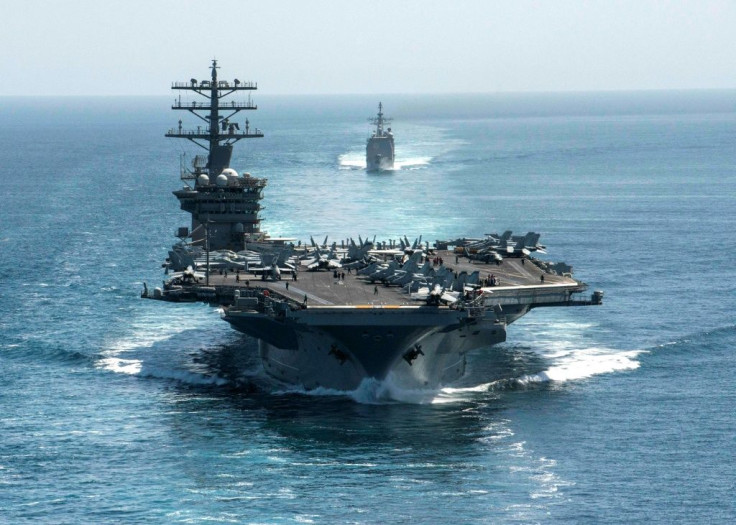Amid Tensions With China And Russia, US Supercarrier Remains Stuck In Port Delaying Global Deployment
KEY POINTS
- USS Nimitz suffered an issue leading to jet fuel contaminating its drinking water system
- Commissioned in 1975, the USS Nimitz was to embark on its last global deployment before being decommissioned
- U.S. Navy had initially considered extending the service life of the USS Nimitz to maintain its carrier fleet numbers
Amid tensions with China and Russia, the problems plaguing the U.S. Navy's aging fleet continue to spell trouble. Days after claiming that the USS Nimitz, the world's largest multi-mission nuclear-powered aircraft carrier, was fit for global deployment, the supercarrier remains stuck at port.
Following images that appeared on social media, the Navy confirmed that the aircraft carrier USS Nimitz suffered an issue leading to jet fuel contaminating its drinking water system. The problem was detected while the ship was at sea on Sept. 16 and three days later, the Navy said the issue had been resolved.
However, after claiming that the water on the USS Nimitz was clean, the Navy has now acknowledged that the water still shows signs of contamination leading to delay in the planned deployment of the aircraft carrier.
The 1975-commissioned USS Nimitz had left port at Bremerton on Sept. 13 for its final training mission prior to the ship's global deployment. After the training mission, the ship was to embark on its last-ever global deployment before its planned decommissioning in 2026.
The USS Nimitz was last deployed in April 2020 for 11 months spanning 99,000 miles amid the backdrop of a spreading COVID-19 pandemic. Following its return, the ship underwent major repairs before returning to sea in November 2021. However, the carrier reported a "minor material deficiency" in the propulsion plant and returned for emergency repairs.
The U.S. Navy has been facing problems with its aging fleet getting harder to maintain given the problems in several key areas, such as its main propulsion systems, electrical systems and Aegis combat systems.
Initially, the Navy had considered extending the service life of USS Nimitz to maintain its carrier fleet numbers, however, backtracked after the costs became clear.
Earlier reports said that in an effort to grow its fleet size to 355 ships, the Navy was considering extending the service life of its ships by at least seven years, and could stretch the life of some ships by 13 years.
Even as the U.S. Navy struggles with the maintenance of its aging fleet, China has seen rapid expansion in its naval fleet.
A 2021 Pentagon report has projected that the Chinese Naval fleet was expected to grow to 420 ships by 2025 and 460 ships by 2030.
Meanwhile, a recent report in USNI News said that while the Chinese fleet this year grew beyond 355 ships, the U.S. still has a backlog of about 4,200 days of maintenance delays in the surface ship program – the equivalent of reducing the fleet by about 10 ships for a year.

© Copyright IBTimes 2025. All rights reserved.






















